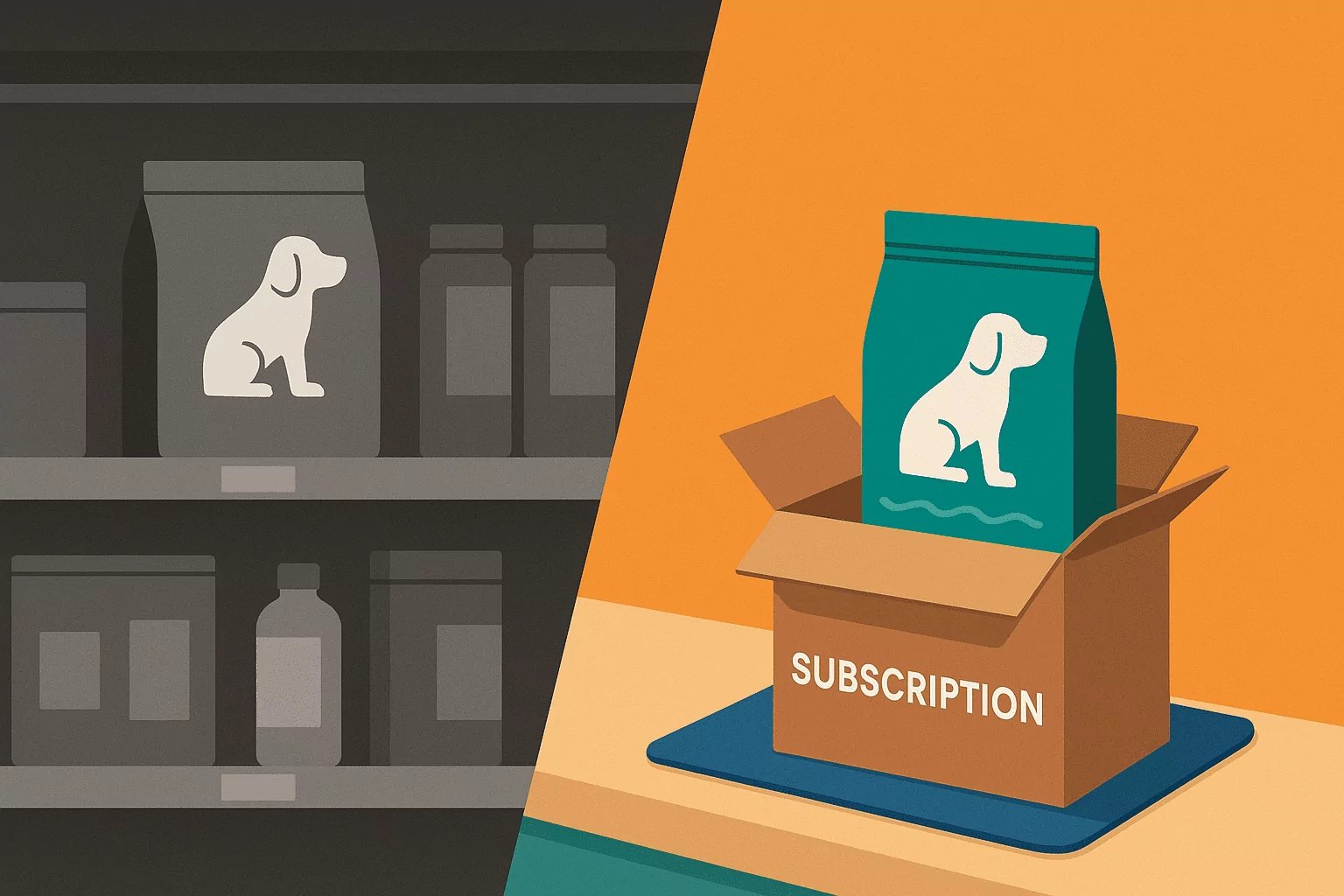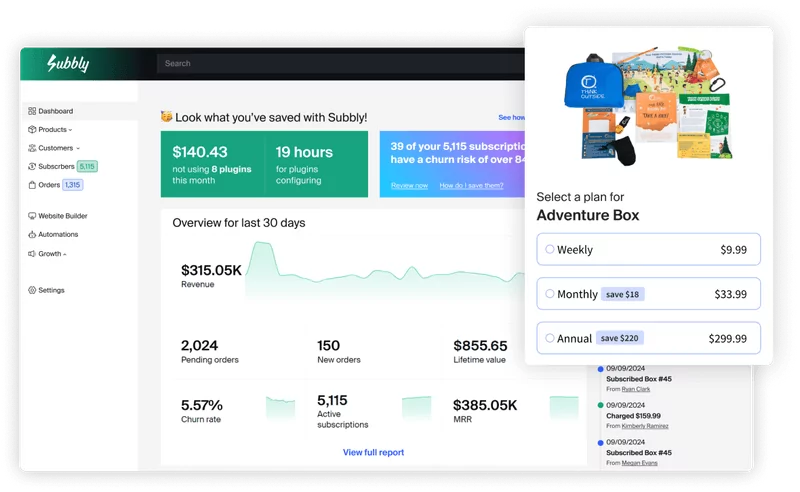What is the Retail Subscription Model?
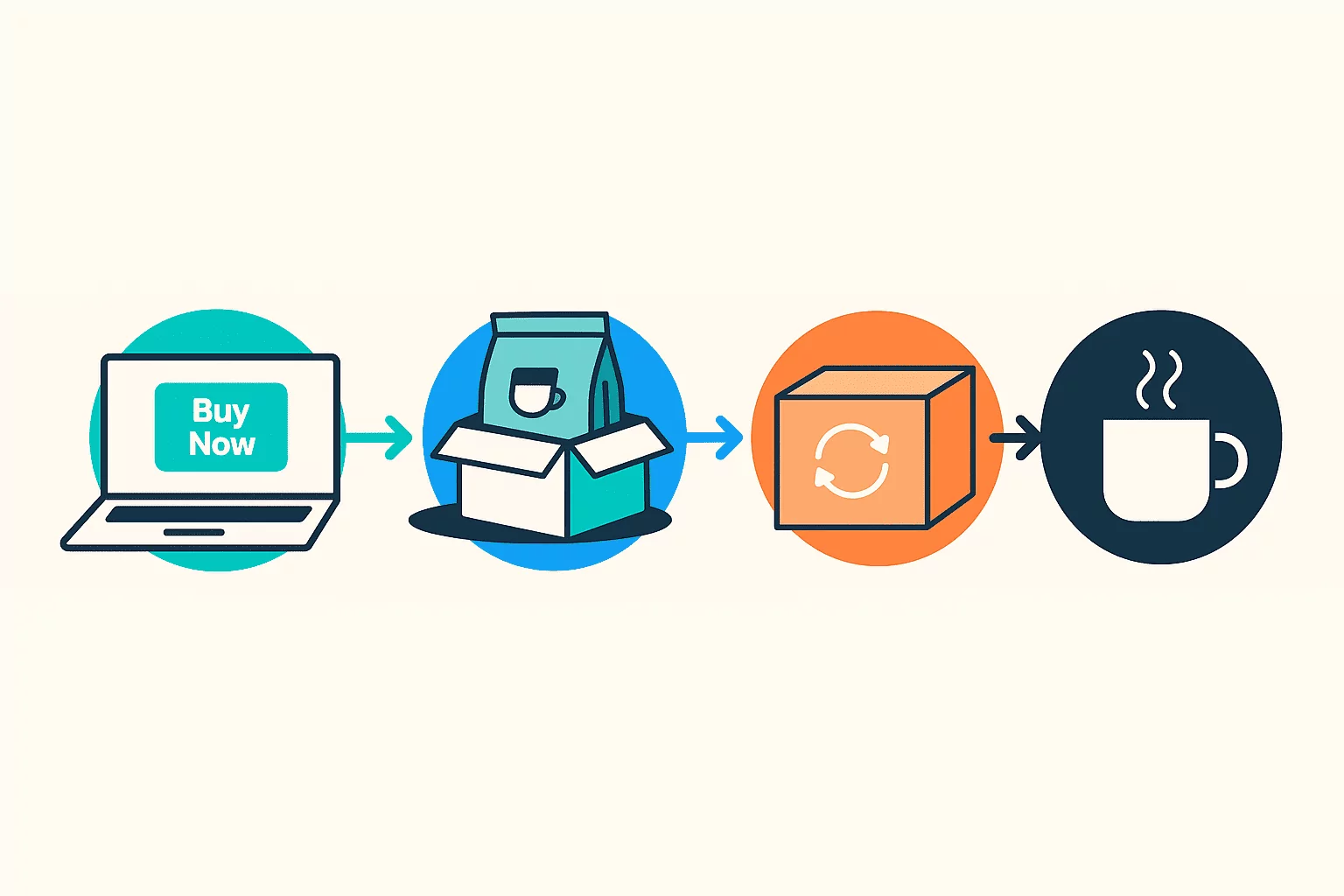
The retail subscription model enables established businesses to offer products or services on a recurring basis.
This is typically achieved through automatic deliveries, exclusive memberships, or curated product selections.
Instead of relying on one-time transactions, the retail subscription model allows your customers to commit to automatic regular purchases.
Subscribers pay a recurring fee in exchange for consistent value, whether that’s convenience, savings, exclusive access, or a personalized experience. This fee could be paid monthly, quarterly, or annually.
Types of retail subscription
Retail subscriptions come in several forms. The most common are:
Specific product lines
This is where a company that has multiple offerings chooses a product line or a sub-brand to sell on subscription.
A good example of a company that has done this is UK retailer M&S. The company was well-known for selling high-quality flowers at its physical locations and online.

Smaller florists had realized that their customers enjoyed having a regular supply of flowers to brighten their homes. Their flower subscription programs had enjoyed a lot of success, prompting M&S to do the same.
They were in an ideal position to do this. They knew demand was high, and they already had the required supply chain in place.
Within three years, M&S had thousands of subscribers and had achieved a five-figure monthly recurring revenue (MRR).
You can read more about how M&S used Subbly’s subscription-first platform to achieve this here.
Replenishment
This involves regularly sending customers the same essential products. This saves them time and prevents them from running out. Examples of products that suit this strategy include: toiletries, groceries, and pet food.
For instance, Subbly customer Pure Roasters Coffee provides its customers with a regular supply of ethically sourced caffeinated delights. Being able to buy coffee on subscription is convenient and saves customers the horror of running out.
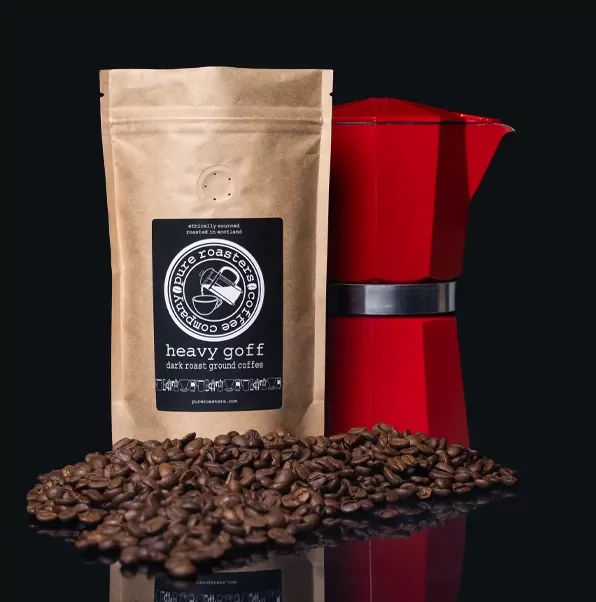
Subscribe and save
This is when customers would normally buy a product one-off but then have the option to get it cheaper per unit if they purchase a subscription.
A good example of this is Amazon’s Subscribe and Save offering. This allows customers to schedule automatic deliveries of everyday items like toiletries, groceries, and household supplies.
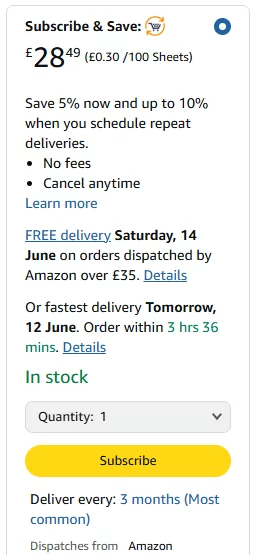
Subscribers receive a discount on each order and can choose the delivery frequency that suits them.
The service is designed to make repeat purchases easier for customers. At the same time, the customer convenience and savings help Amazon build long-term customer retention and loyalty.
Curation
The retailer delivers a handpicked selection of items that are often themed or seasonal. These are usually designed to surprise and delight the customer rather than provide convenience.
Common examples include beauty boxes, home décor refresh kits, or clothing bundles based on style preferences.
An example of this is Walmart’s Beauty Box. This quarterly subscription service delivers a curated selection of beauty product samples to customers based on their preferences.
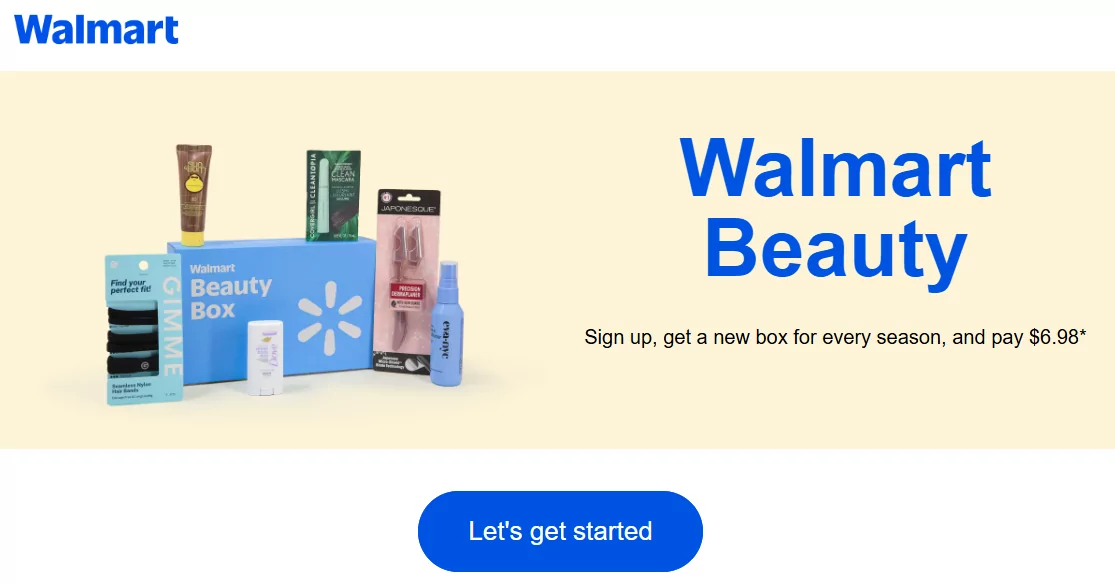
Subscribers receive a surprise mix of items from both well-known and emerging brands.
It shows how a large, established retailer can use curation to introduce customers to new products and stay engaged with their brand.
Perks-based memberships
This strategy provides subscribers with benefits like free delivery, discounts, or exclusive access in exchange for a recurring fee. This works particularly well for businesses where customers make a high number of one-off purchases, like supermarkets or coffee shops.
The main aim of adding a subscription service to your retail business is to extend value and not replace the core offering. It should be treated as a bolt-on that can improve margins, retention, and brand differentiation.
Best Buy Total is a paid membership from U.S.-based electronics retailer Best Buy. The program offers ongoing benefits for an annual fee.
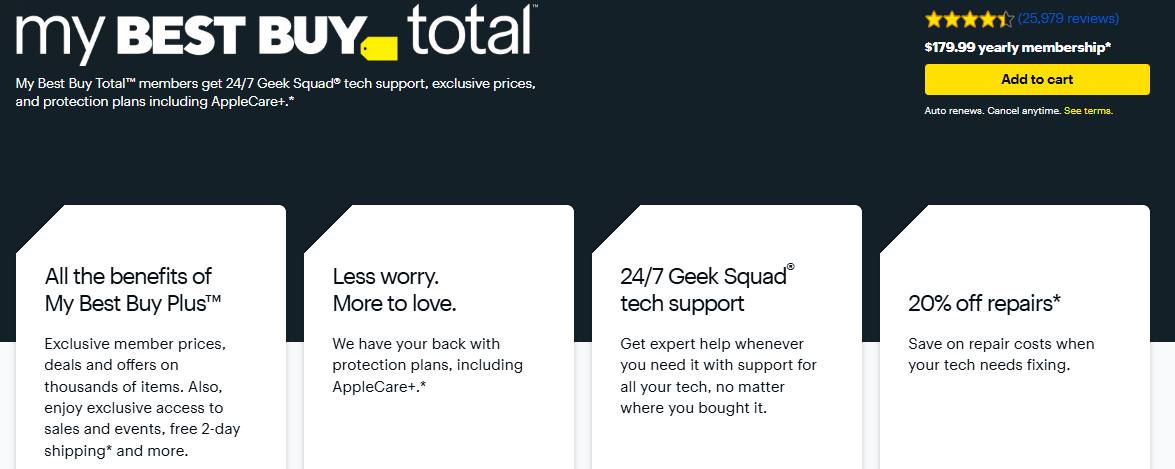
These benefits include free delivery, standard installation, extended return windows, exclusive member pricing, and around-the-clock tech support.
Offering these exclusive perks enhances customer satisfaction, encouraging subscribers to make further purchases.
Use perk-based membership at physical stores, with Subbly Pass
With Subbly Pass, your regular customers can download an app to pre-pay for your products and access loyalty benefits and promotions.
To use it, they simply scan their app at the counter when purchasing online or in person.
It’s quick, convenient, and perfect for businesses like coffee shops that want to lock in regular footfall from passing customers.
Talk to our team to learn more.
Why Retailers Are Turning to Subscriptions
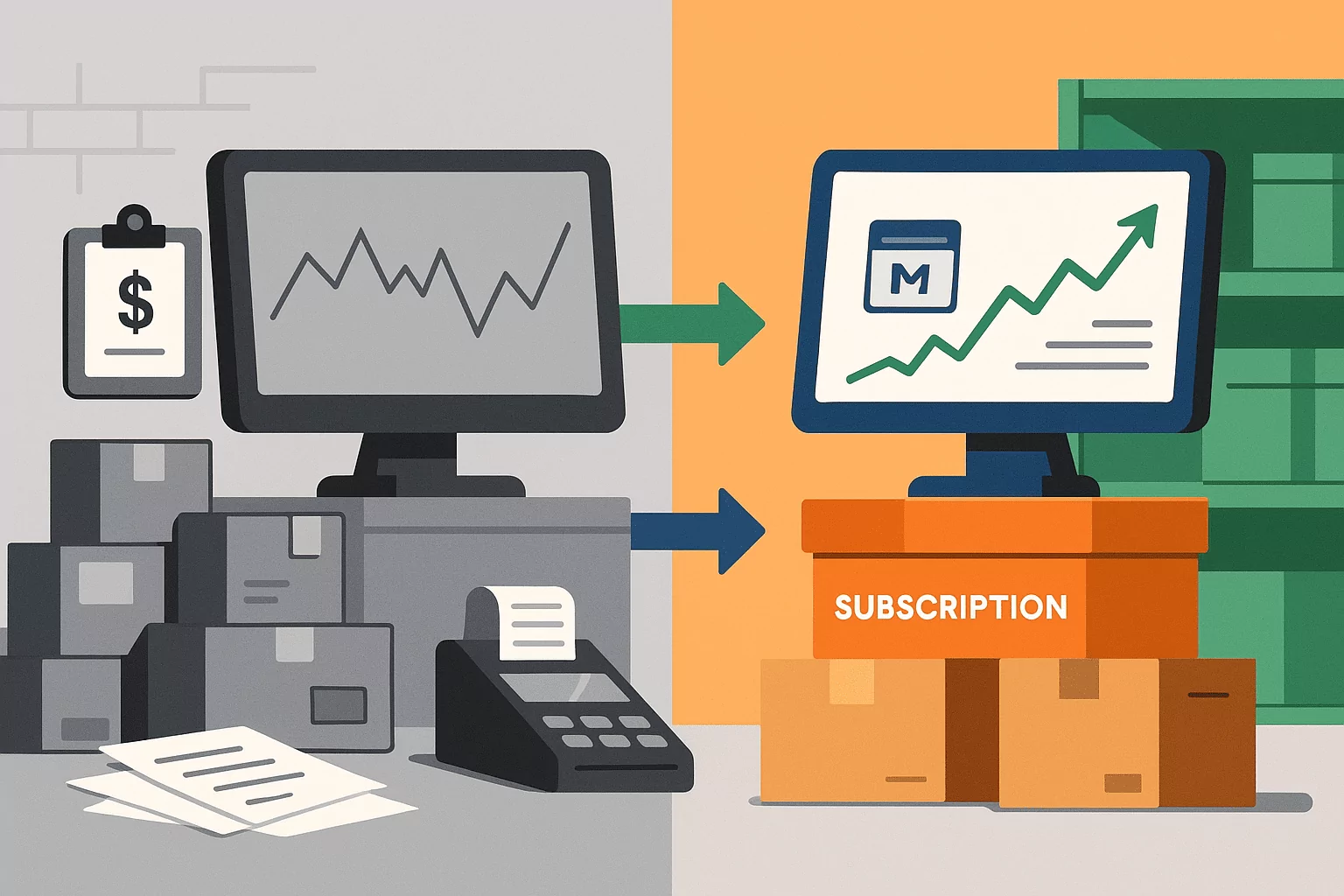
Consumer behaviour has changed significantly in recent years, impacting retail economics. It’s becoming more difficult than ever to maintain profits through one-off sales alone.
This section explores some of the reasons why launching a subscription service helps turn these challenges into opportunities.
Existing infrastructure makes it easier to get started
Unlike DTC startups, most retailers already have the infrastructure needed to support subscriptions; they just haven’t applied it to a recurring model yet.
With established supply chains, warehousing, fulfillment operations, and customer data, retailers are in a strong position to layer on a subscription offering without reinventing their business.
Creates direct relationships with customers
The standard retail transaction doesn’t involve much relationship building. Usually, the customer enters the shop, finds what they want, buys it, and leaves.
Subscriptions, on the other hand, are all about relationship building. Customers are often happy to give you lots of information about themselves and their preferences so you can personalize and optimize their experience.
The consumer is then exposed to your brand regularly through your packaging, thank you emails, customer satisfaction surveys, and renewal messages.
Declining brand loyalty and rising acquisition costs
Winning and keeping customers is becoming more difficult. Paid customer acquisition cost (CAC) for retail rose 7% YoY in 2024, reaching an average of $226 per new customer.
At the same time, customer loyalty is declining. Between 2022 and 2023, the number of people in the US loyal to one brand or more fell from 79% in 2022 to 68% in 2023.
Subscriptions help offset this. By converting one-off or occasional shoppers into subscribers, retailers can build longer-term relationships and increase customer lifetime value (CLV).
The rise of convenience-first buying habits
The rise of online shopping means consumers increasingly value ease and speed.
Subscriptions give them that; they buy something once, and it arrives at their door regularly. More than 22% of consumers cite convenience as their top reason for subscribing, and across all categories, people are willing to pay around 5% extra for convenience in retail interactions.
Predictable revenue
Subscriptions offer recurring income that supports smarter financial planning and helps businesses weather market fluctuations.
Subscriptions also give retailers more data. Think metrics like Monthly Recurring Revenue (MRR) and churn rates. This enables them to measure financial health and make more informed decisions regarding marketing, expansion, or stock investments.
Smarter inventory planning
Since subscription orders arrive on a predictable schedule, retailers can forecast stock needs more accurately, reducing excess inventory and ensuring they don’t run out.
Many subscription management and fulfillment platforms include demand forecasting and inventory levels optimization tools to help retailers balance this.
Challenges Retailers Face with Subscription Models
The subscription model offers retailers many advantages, but that doesn’t mean adding one to your business will be easy.
Most businesses come up against the following operational and strategic challenges.
More stringent fulfillment requirements
Fulfilment needs to be more consistent and tightly managed. Subscriptions require regular shipping schedules, clear cut-off dates, and flexible options for skipping or pausing deliveries. Even one late or missed delivery can lead to cancellations.
Increased customer service traffic
Retention and building relationships have their downsides. Having more engaged customers means more of them will contact your customer service team regularly.
Many retailers underestimate how much this will increase their customer service team’s workload. Subscribers expect fast responses to billing issues, delivery questions, and product changes.
Managing churn
Even once you win a subscriber, keeping them is a constant challenge. If the perceived value doesn’t hold up over time, they cancel.
Shoppers can:
- Become fatigued with subscription boxes
- Feel they no longer need the service
- Find a better value elsewhere
Around a third of subscribers cancel within the first three months, often due to a lack of personalisation or flexibility.
You’ll need to build a certain level of churn into your financial projections and work hard to keep that within acceptable parameters.
Recently, we published a churn report that found the average churn rate across all merchants, verticals, and models was 7.44%.
How to Get Started With Retail Subscriptions
Now you know why subscriptions are critical for retailers and the challenges in launching them. This section provides actionable steps on how you can launch your first subscription.
1. Assess which product lines suit subscriptions
Start by identifying products or services with repeat purchase potential or high engagement value. You can identify the right products by asking yourself:
- Do customers buy this regularly?
- Is there value in curating or bundling this product?
- Can you create a meaningful loyalty experience?
For example, a high-ticket one-off purchase like an integrated vinyl stereo system probably wouldn’t require a subscription.
However, you might offer customers a regular delivery of curated vinyl records tailored to their musical taste to play on their stereo.
Examining transaction data, customer feedback, and product margins can help determine what makes a good subscription.
For example, if people regularly buy two products together, you could offer them as a discounted bundle on subscription.
2. Define your subscription value proposition
Decide what customers will get and why they would subscribe instead of buying on demand.
You also need to make sure your business gets value out of it. Selling subscriptions at a discount might attract more customers, but if you lose money overall, then it may not be worth it.
Pricing needs to reflect perceived value, not just discounts.
Decide on factors like:
- How often will you bill customers? Monthly, quarterly, annually?
- Will you have tiered pricing or a single offering?
- How will you use trials, introductory offers, or bundling to incentivize customers and derisk signing up?
3. Align internal systems and operations
This is likely to be the trickiest part of setting up new retail subscription services. You’ll need to make sure everything behind the scenes is set up to handle subscriptions.
There are three main areas to consider here:
Inventory management: You need systems that can track recurring demand and hold enough inventory to cover upcoming shipments. You’ll need systems to accurately forecast stock and real-time stock alerts to warn you of issues like missed deliveries.
Fulfillment workflows: You’ll need clear cutoff dates for billing, packing, and shipping. You’ll then need to build your internal systems around those timelines. For example, if you’re selling curated boxes, you’ll need systems for batch-picking, printing shipping labels and creating and assembling custom packaging. You’ll also need a reliable logistics partner that turns up on time every subscription cycle.
Customer service readiness: As mentioned earlier, the number of customer service inquiries you receive is likely to increase, so make sure you prepare for this.
Some ways to do this include:
- Train your staff to deal with subscription-related inquiries like skipping a delivery, canceling, and renewals.
- Use online FAQs and automated chatbots to reduce call center load and help customers to self-serve.
- Monitor subscription customer support data separately to ensure you satisfy customers and deal with their inquiries efficiently
4. Choose the right technology stack
If you’re an established retailer, you probably already have an eCommerce platform.
But selling subscriptions isn’t the same as selling products once. It introduces new technical demands, and most general-purpose platforms aren’t designed to handle them.
Subscriptions require systems that can manage:
- Recurring payments and automatic billing
- Renewal logic across different cycles (e.g. monthly, quarterly)
- Flexible customer options like pausing, skipping, or switching plans
- Churn prevention tools, dunning flows, and subscription analytics
Platforms like Shopify or BigCommerce aren’t built for subscriptions out of the box and instead rely on third-party plugins or custom-built workarounds.
This leads to:
- Poor integration between your store and your subscription data
- Limited control over how subscriptions behave
- Friction in the customer experience, especially when users want to manage or edit their plan
- Compatibility issues when plugins update or break
As you gain more subscribers, you’ll quickly find these platforms generate more admin for you, making it difficult to scale and frustrating for subscribers.
Larger retailers could build their own platform to get around these issues, but this is expensive, time-consuming, and likely to involve significant trial and error.
A simpler alternative is to use a platform that was built for subscriptions from day one, like Subbly.
What is Subbly?
Subbly is a subscriptions-first ecommerce platform that helps retailers sell, manage, and grow subscription products, without needing plugins or workarounds.
It includes everything needed to power your subscription model, such as:
✔️ Built-in checkout and recurring billing
✔️ Customer portals for managing plans, payments, and deliveries
✔️ Subscription logic (e.g. cut-off dates, proration, prepaid cycles)
✔️ Churn prevention tools (automated dunning, win-back flows)
✔️ Analytics and reporting tailored to recurring revenue metrics
✔️ Flexible product options: From replenishment to curated boxes, memberships, and digital offers
Because Subbly is purpose-built, everything works straight away, no complex integration or testing required.
This helps retailers to launch and scale subscription programs faster, with less complexity and fewer support issues, while giving customers a smoother, more reliable experience.
To find out how Subbly can help your business, sign up for a free trial today.
5. Prepare your retention strategy
Many retailers focus heavily on the launch offer or sign-up flow, but fail to plan for what happens next.
Acquiring subscribers is only half of the subscription model. The real value comes from keeping customers engaged over time, and that requires having a clear retention plan.
Unless you engage regularly with customers and add and reinforce value, even happy customers may cancel.
Here’s what to consider in your retention strategy:
Onboarding journeys: Ensure your onboarding process sets subscriber expectations early, explains how to get value out of their subscription, and where to manage customer preferences. This sets the tone for the relationship and builds trust early.
For example, if a customer isn’t told when to expect their first delivery and it takes longer than they expect, they may get frustrated waiting and cancel.
Mid-cycle engagement: Keep subscribers informed and interested between deliveries. This could include sneak peeks, add-on offers, surveys, or tips for using the product.
Below is a good example from the flower subscription service Appleyard London. This encourages subscribers to spend more while also enjoying better value for money.
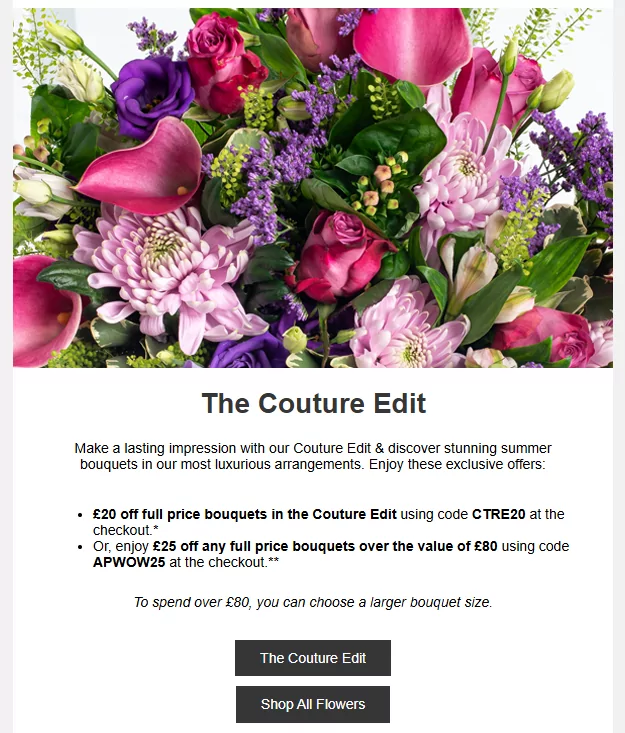
Flexible account management: Giving customers easy ways to pause, skip, or adjust their subscription reduces frustration and lowers the risk of cancellation.
Win-back flows: Set up automated reminders or offers for subscribers who show signs of disengaging or who have recently cancelled. A small incentive or personal message can often bring them back.
For example, if they offer a free trial and people don’t convert to full subscribers, then you could offer to extend the trial period.
Here’s an example of what a trial extension email could look like for an SaaS:
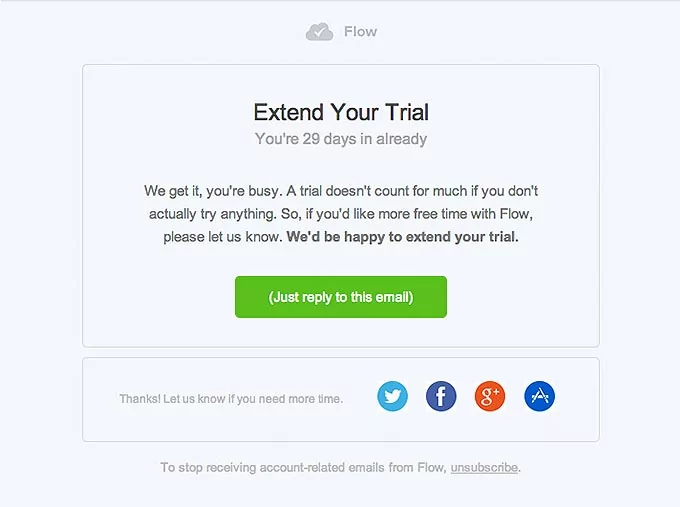
6. Track the right metrics to improve retention
Building a strong subscription offering involves understanding how long customers stay, when they’re most likely to cancel, and what drives long-term value.
By monitoring metrics regularly, you can spot patterns early and make informed decisions on pricing, onboarding, and marketing. Over time, small improvements to retention can drive significant growth in revenue.
Key metrics to track include:
Churn rate: The percentage of subscribers who cancel during a given time period. A rising churn rate is a sign your subscriptions aren’t delivering value.
Customer lifetime value (CLV): The total revenue you expect from each subscriber while they are a customer with you. Higher CLV means better ROI from your acquisition spend.
Cohort retention: Tracking how different groups of customers behave over time (e.g. people who signed up during a specific promotion). This helps you see what strategies are working and what isn’t.
Active subscriber rate: The number of paying subscribers who are still engaged with your product (e.g., not skipping every cycle). This gives a clearer view of real engagement, not just billing.
Final Thoughts: Is the Retail Subscription Model Right for Your Business?
Subscriptions aren’t just for startups or niche DTC brands. They’re becoming a core strategy for established retailers looking to unlock consistent revenue, improve loyalty, and meet changing customer expectations.
But success requires the right technology, operational planning, and a clear focus on delivering ongoing value.
Whether you’re exploring replenishment, curated boxes, or perks-based memberships, a purpose-built platform like Subbly can help you launch with confidence and scale without friction.
Ready to make subscriptions part of your retail strategy? Sign up for a free trial of Subbly today.

